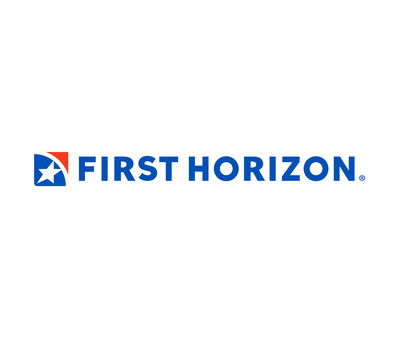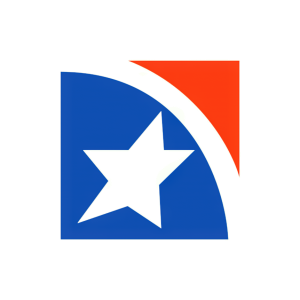First Horizon Corporation Reports Full Year 2023 Net Income Available to Common Shareholders of $865 Million or EPS of $1.54; $806 Million or $1.43 on an Adjusted Basis*
Period End Deposits Increased
Fourth Quarter 2023 Net Income Available to Common Shareholders of
4Q23 ROTCE of
"We reported strong fourth quarter and full-year 2023 results demonstrating our ability to successfully execute on our strategic priorities and navigate the economic headwinds during the year. Prudent risk management, strong liquidity, and robust capital levels supported loan growth of
"I am exceptionally proud of the resilience of our team, their unwavering dedication to our clients and the many accomplishments achieved during the year. As we enter 2024 and celebrate 160 years in business, we are well-positioned to capitalize on our exceptional client relationships, diversified business model, and attractive footprint," continued
Conference Call Information
Analysts, investors and interested parties may call toll-free starting at 8:15 a.m. CT on January 18, 2024 by dialing 1-833-470-1428 (if calling from the
Participants can also opt to listen to the live audio webcast at https://ir.firsthorizon.com/events-and-presentations/default.aspx.
A replay of the call will be available beginning at noon CT on January 18 until midnight CT on February 1, 2024. To listen to the replay, dial 1-866-813-9403 (
Forward-Looking Statements
This document contains forward-looking statements within the meaning of the Private Securities Litigation Reform Act of 1995, Section 27A of the Securities Act of 1933, as amended (the "Securities Act"), and Section 21E of the Securities Exchange Act of 1934, as amended (the "Exchange Act"). Forward-looking statements pertain to FHN's beliefs, plans, goals, expectations, and estimates. Forward-looking statements are not a representation of historical information, but instead pertain to future operations, strategies, financial results, or other developments. Forward-looking statements can be identified by the words "believe," "expect," "anticipate," "intend," "estimate," "should," "is likely," "will," "going forward," and other expressions that indicate future events and trends.
Forward-looking statements are necessarily based upon estimates and assumptions that are inherently subject to significant business, operational, economic, and competitive uncertainties and contingencies, many of which are beyond FHN's control, and many of which, with respect to future business decisions and actions (including acquisitions and divestitures), are subject to change and could cause FHN's actual future results and outcomes to differ materially from those contemplated or implied by forward-looking statements or historical performance. Examples of uncertainties and contingencies include those mentioned: in this document; in Items 2.02 and 7.01 of FHN's Current Report on Form 8-K to which this document has been filed as an exhibit; in the forepart, and in Items 1, 1A, and 7, of FHN's most recent Annual Report on Form 10-K, as amended; and in the forepart, and in Item 1A of Part II, of FHN's Quarterly Report(s) on Form 10-Q filed after that Annual Report.
FHN assumes no obligation to update or revise any forward-looking statements that are made in this document or in any other statement, release, report, or filing from time to time.
Use of Non-GAAP Measures and Regulatory Measures that are not GAAP
Certain measures included in this report are "non-GAAP," meaning they are not presented in accordance with generally accepted accounting principles in the
The non-GAAP measures presented in this earnings release are fully taxable equivalent measures, pre-provision net revenue ("PPNR"), Loans to Mortgage Companies ("LMC"), return on average tangible common equity ("ROTCE"), tangible common equity ("TCE") to tangible assets ("TA"), tangible book value ("TBV") per common share, and various consolidated and segment results and performance measures and ratios adjusted for notable items.
Presentation of regulatory measures, even those which are not GAAP, provide a meaningful base for comparability to other financial institutions subject to the same regulations as FHN, as demonstrated by their use by banking regulators in reviewing capital adequacy of financial institutions. Although not GAAP terms, these regulatory measures are not considered "non-GAAP" under
Refer to the tabular reconciliation of non-GAAP to GAAP measures and presentation of the most comparable GAAP items beginning on page 22 of FHN's complete 4Q23 earnings release available at https://ir.firsthorizon.com.
First Horizon Corp. (NYSE: FHN), with
*ROTCE, PPNR, Core net interest income (NII), tangible book value per share, loans and leases excluding PPP and/or LMC, and "Adjusted" results are Non-GAAP Financial Measures; NII, Total Revenue, NIM and PPNR are presented on a fully taxable equivalent basis; References to loans include leases and EPS are based on diluted shares; Capital ratios are preliminary. Please reference the 4Q23 earnings materials at https://ir.firsthorizon.com for a description of our use of Non-GAAP measures and a reconciliation of these measures to GAAP presentation.
![]() View original content to download multimedia:https://www.prnewswire.com/news-releases/first-horizon-corporation-reports-full-year-2023-net-income-available-to-common-shareholders-of-865-million-or-eps-of-1-54-806-million-or-1-43-on-an-adjusted-basis-302037599.html
View original content to download multimedia:https://www.prnewswire.com/news-releases/first-horizon-corporation-reports-full-year-2023-net-income-available-to-common-shareholders-of-865-million-or-eps-of-1-54-806-million-or-1-43-on-an-adjusted-basis-302037599.html
SOURCE First Horizon Corporation









